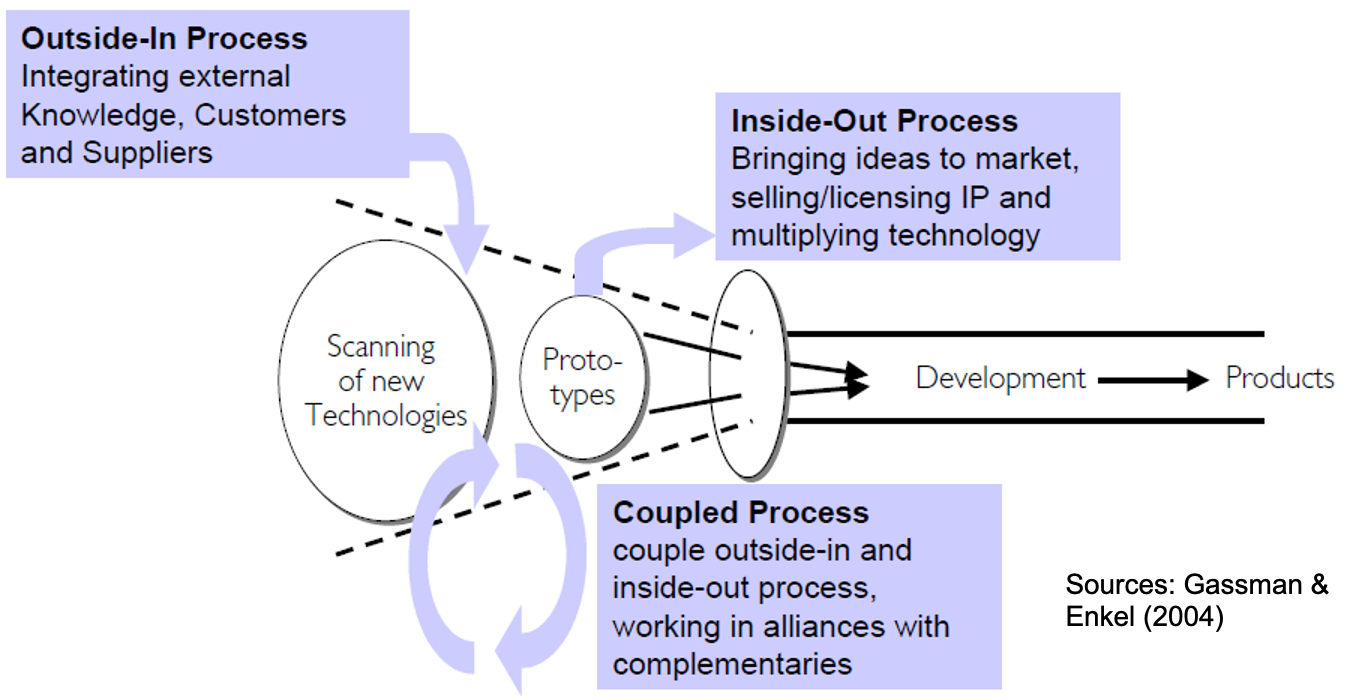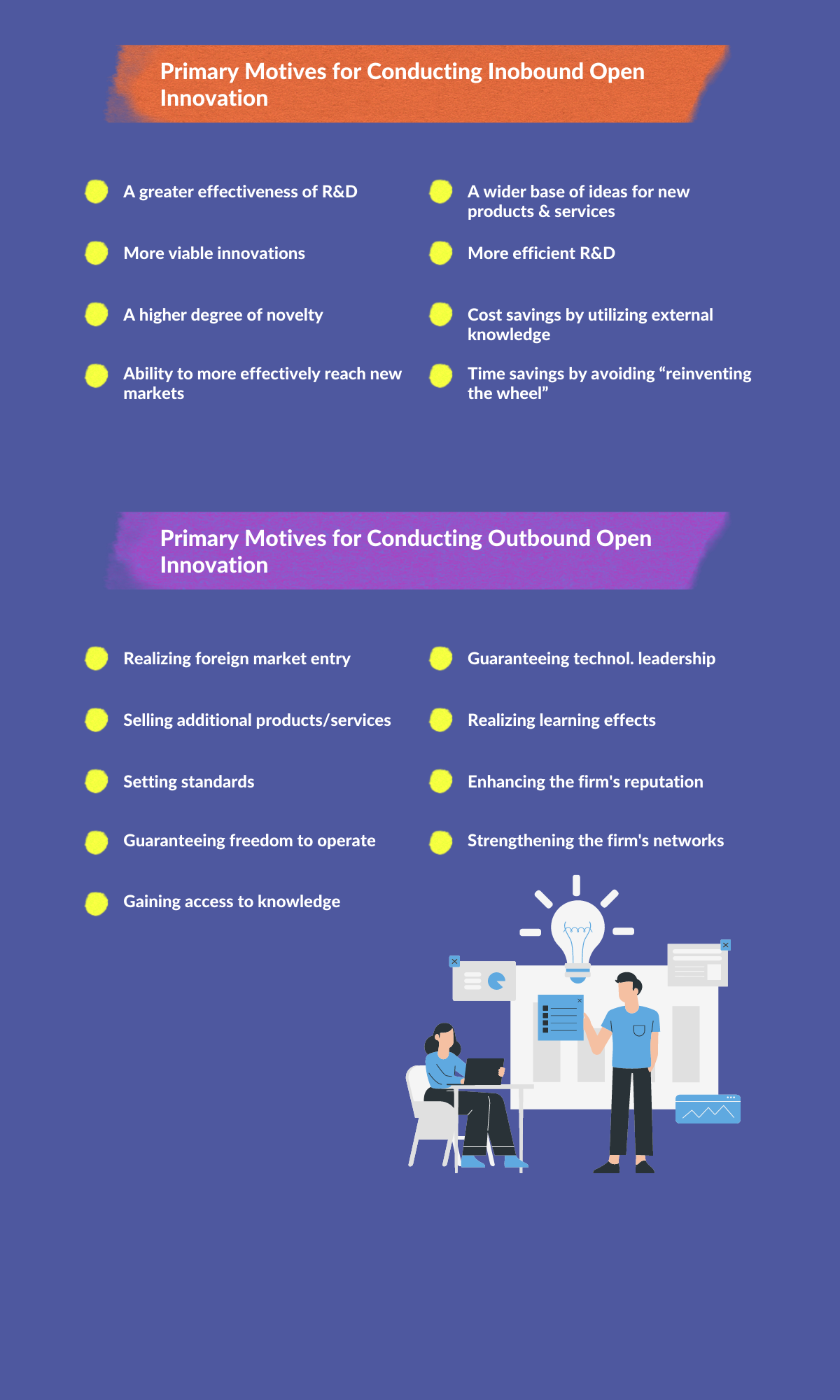|
|
Module 1: The Open Innovation principle and Open Innovation process for agro-industry and bioeconomy. |
|
|
Bahar Bahramian Dehkordi, Nikhil Phadnis |
|
|
Open Innovation has become a new paradigm for organizing innovation and driving profitability not only in several mainstream industries like consumer products, automotive, or services but also the minorities such as bioeconomy, fish and organic farming etc. Module one familiarizes an individual with the world of Open Innovation, its history, and why the world jumped on the trend of OI investing in Open Innovation activities. The module provides comprehensive information on the bio-economy and agricultural industry, showcasing the impact that Open Innovation has had on it. Additionally, the module dives deeper into the principles of Open Innovation, its potential use cases, and relevant contextual case studies. This module provides SME managers with the basics of Open Innovation concepts and illustrates them in the form of case studies to signify their importance in a world of uncertainty. |
|
Upon completing this module, you should be able to: |
|
4. Different types of Open Innovation. “Inbound and Outbound.”
As you can see in Figure 5, there are two modes of Open Innovation which are known as Inbound (Outside-in) and Outbound (Inside-out).
Inbound Open Innovation involves obtaining knowledge and skills from external sources and searching outside the organization for fresh information. The goal is to identify, choose, use, and incorporate new ideas internally [27]. In other words, the general logic is that companies search for and acquire technologies and knowledge from outside in order to complement internally developed R&D and achieve better competitiveness in the market [28].
Example: CH-Bioforce is an SME that developed the best biomass fractionation technology in Finland. This Biotech company was established in 2011 wherein researchers developed a process to extract hemicelluloses in a high yield and purity in their native polymeric form. They developed a wide portfolio of intellectual property on the technological process that could be used to create chemicals based on bio-based sources. This is a great case of inbound open innovation since researchers could only develop some of the technology by themselves but had to accept help from other universities, public funding, several external collaborators such as Chemec Oy. Collaborating with external partners to develop in-house products whether it is in the form of ideas, funding, know how or utilising external knowledge to develop technologies falls under the inbound open innovation criteria.
To dive a little deeper, today almost the entire chemical industry is dependent on petroleum for hydrocarbons that are used in plastics, cosmetics, paints and drugs. However global climate change poses a serious threat with increasing legislations on petroleum free products. Therefore, these researchers utilise the strategy of inbound open innovation, by collaborating with other universities, acquiring public funding to develop the technology to extract biomaterials that can be used to produce plastic, textiles, adhesives and packaging materials.
Inbound open innovation also includes developing products by creating platforms that can accept ideas from the collective intelligence of the world, or crowdsourcing. For example, CH-Bioforce conducted a hackathon to brainstorm ideas and create solutions that can make the world a better place. Within this, several students accepted their challenge and provided solutions for how the company could develop products catered to the textile market.
Outbound Open Innovation is an inside-out process or external knowledge exploitation. This inside-out process is associated with outbound technology transfer capabilities and is often studied within the knowledge transfer framework. This approach to Open Innovation has been successfully deployed by such companies as IBM, Novartis etc., aiming at decreasing the fixed costs of their R&D, sharing the risks, and gaining access to distribution channels and brands [29].

Figure 5. Different modes of Open Innovation
Example: the same company discussed in inbound open innovation can also practise open innovation in an outbound way:
Currently, we know that the company owns a wide portfolio of intellectual property on extraction technologies that can allow wood materials to provide the necessary elements for artificial substances such as adhesives, plastics paints or textiles. However, this company still needs to fully scale up their operations. In fact, in 2024, a midscale plant is to be commissioned at a capacity of 20,000 tons per year. CH-Bioforce[30] is currently looking for new collaborations and partners to apply their technology. Through the open innovation lens this can be done using two methods:
- licensing their intellectual property to the world - the company already has a wide portfolio of intellectual property that they can licence to other manufacturers and grow through commissions. In this case the company does not need to produce physical products but can be profitable by licensing their intellectual property to other chemical companies around the world. This strategy has several benefits. Scaling up is important for the business to survive, and the company cannot invest in factories all around the globe however it can utilise the existing chemical factories in several locations of the world. This can be done by selling the know-how and the technologies behind the extraction process.
- Selling intellectual property- almost all companies in the world protect their technologies using patents. However, not all of them are ever commercialised or used in the real world. Sometimes companies sell invaluable intellectual property to potential buyers and make a profit from them. Typically, these patents will be sold to industries that are not directly competing with them in their business, that is, those companies that do not produce chemicals.
- Participating in standardisation and opening up the intellectual property - several revolutionary technologies in the world that are aimed at a mass market participate in standardisation (such as Bluetooth or Wi-Fi), which in turn become a platform and a benchmark for other companies to follow. Legislations in a specific market domain are also dependent on standardisations. CH-Bioforce could open up some of its patents that can allow for better market penetration and acceptance and could become a new standard for chemical companies with respect to sustainability. Currently the world has a strong need of bio-based sources to create quality synthetic raw materials for other processes and the demand for sustainability from the consumer side is high. Therefore, such a strategy could also be potentially profitable for the company.
Motives for Inbound and outbound Open Innovation
Different things may encourage firms to apply inbound and outbound Open Innovation. The following picture presents some of the primary motives for adopting these modes of Open Innovation.

Over time, many practices used to implement inbound Open Innovation have emerged. The most relevant practices in this regard are described and categorised in the following [31]. In table 2 we explain each OI strategy in brief.
Table 2. Inbound and outbound Open Innovation strategies.
| Inbound Practices | |
| Consumer and customer co-creation | Involvement of consumers or customers in the generation, evaluation, and testing of novel ideas for products, services, processes, or even business models |
| Information networking | Networking with other organizations without a formal contractual relationship, e.g., at conferences or events, to access external knowledge |
| University research grants | Funding of external research projects by researchers and scientists in universities (faculty, PhD students, or postdoctoral fellows) to access external knowledge |
| Publicly funded R&D consortia | Participation in R&D consortia with other public or private organizations in which R&D activities are fully or partly funded by governmental organizations (e.g., European Commission or National Science Foundation) |
| Contracting with external R&D service providers | Contracting with external service providers for specialized R&D services, including technology scouting, virtual prototyping, etc. |
| Idea and start-up competitions | Invitation to entrepreneurial teams and start-ups to submit business ideas via open competitive calls, with collaboration and venture support to winning teams |
| IP in-licensing | Licensing of external intellectual property rights (e.g., trademarks, patents, etc.) via formal licensing agreements |
| Supplier innovation awards | Invitation of existing suppliers to participate in innovation and submit innovative ideas |
| Crowdsourcing | Outsourcing innovation problem solving (including scientific problems) via an open call to external organizations and individuals to submit ideas |
| Specialized services from OI intermediaries | Contracting services of intermediary organizations specialized in Open Innovation to act as an intermediary between a “searcher”-an organization with an Open Innovation problem-and “solver”-a network of organizations or individuals with potential solutions |
| Outbound Practices | |
| Joint venture activities with external partners | Strategic and financial investment in independent joint ventures jointly with external partners |
| Selling of market-ready products | Sale of a market-ready novel product idea to a third party for sale to its customers |
| Participation in public standardization | Participation in standardization activities via formal standardization agencies (e.g., ISO) or informal standardization consortia (e.g., OASIS) |
| Corporate business incubation and venturing | Corporate incubators or accelerators developing potentially profitable ideas and offering supportive environments for entrepreneurs inside the organization to identify novel paths to market |
| IP out-licensing and patent selling | Licensing of internal IP to external organizations via licensing agreements or selling via single payment |
| Donations to commons or non-profit organisations | Donations to commons or non-profits (e.g., open-source communities) to support external R&D |
| Spinoffs | Investment in new ventures founded by firm’s employees outside organizational boundaries |
(Chesbrough and Brunswicker, 2014)
Quiz:
Think again about inbound and outbound Open Innovation. What motivates your company to embrace inbound or outbound Open Innovation?